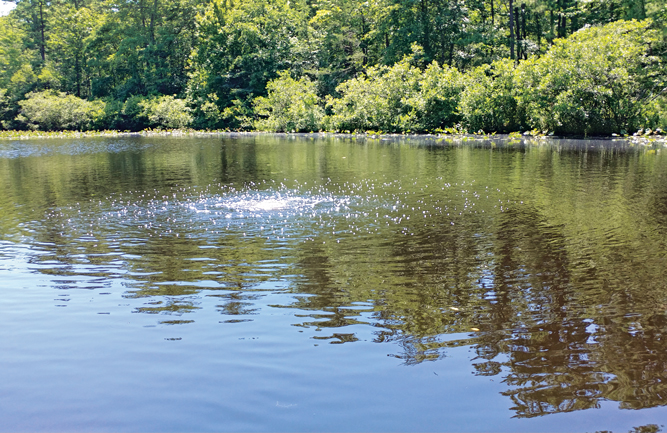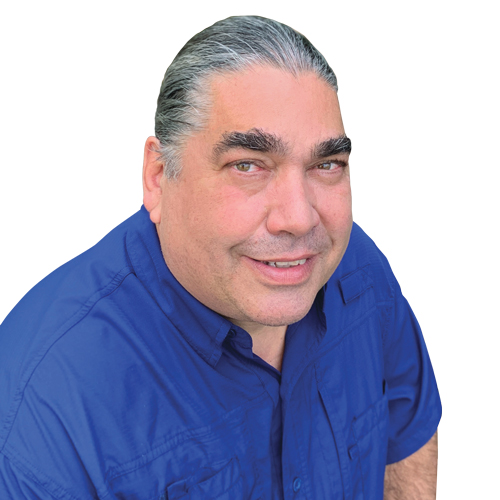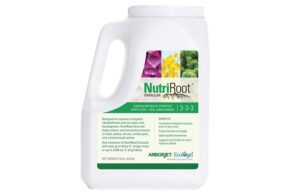Experts Insights: Tips to keep old man winter at bay from your water features

To dewinterize ponds, superintendents should perform diffused aeration and add beneficial bacteria products. (Photo: Pondhawk)
As superintendents prepare to winterize and then dewinterize their courses’ water features, the most important aspect of their maintenance processes is consistency. To ensure consistency and, in turn, long-term success annually, age must be the first characteristic they consider as they plan their winterizing and dewinterizing strategies.
“Superintendents must consider age, especially in regard to large lakes and ponds,” says Brandt Reynolds, sales manager, Blue Thumb. “Generally speaking, as a lake or pond ages, it will need more and more attention if it hasn’t been properly cared for previously.”
He continues, “This is, in part, due to nitrogen and phosphorus levels, which increase over time, as a result of agriculture fertilizers, animal waste and sewage runoff, along with other factors.”
Each year, this type of matter will continue to build up, especially in the bottom of a pond (and, at times, even a lake), thereby creating muck. If left untreated, the muck will increase every year, as ponds, in particular, are unable to clear this material quickly on their own, primarily because of anaerobic bacteria. After all, this type of bacteria exists in low oxygenated areas of ponds, along with some lakes, and does not work as quickly to digest organic material as other types of bacteria do.
According to Reynolds, in order to ensure anaerobic bacteria becomes more active, superintendents must oxygenate their ponds on a consistent basis. He believes the best method is diffused aeration, which thoroughly adds oxygen to bodies of water, leading to the generation of aerobic bacteria.
In addition to diffused aeration, the introduction of beneficial bacteria products to bodies of water also increases water quality and clarity considerably.
“This combination of treatments and aeration will help stave off algae and weed growth,” Reynolds says.
“However, when these nuisances start to show, additional algaecides and/or weed control products will be needed, based on superintendents’ courses’ climates, especially the average length of their winters.”
He adds, “And, at the same time, in preparation for dewinterization, superintendents should also order beneficial bacteria and supplies now — as they look forward to the warmer months ahead.”

Roy Watkins
Air-O-Lator Corp.
Roy Watkins
President
Remember to keep an eye on your equipment. The shifting weather can sometimes affect your equipment. The colder months are a great time to bring your equipment out of the water and clean it before winter comes. Clean and inspect your fountain for nicks and wear. Pay attention to the power cable attached to your fountain and consistently monitor the water levels. Examine the clarity of your water and check for insufficient oxygen levels. Watch for visible signs of unhealthy water, such as the presence of algae, odor or sediment buildup. Any time is a great time to order replacement parts, but it’s an especially good time after you’ve inspected your fountain. If you’re in an area that does not get below freezing, this is a good time to clean and inspect your fountain and replace any worn or damaged parts, prior to storing them for the winter.

Sandra Burton
PondHawk by Linne Industries
Sandra Burton
CEO and founder
Superintendents should be mindful that not all water features require winterizing, storage and reinstalling during springtime. Superintendents that use PondHawk solar-powered water aeration have none of the annual weatherizing hassles that are common with electric water features. PondHawk’s electrical and mechanical components are located safely in the enclosure behind the solar panel. Only the rugged freeze-safe diffuser and weighted airline are in the water. Since it doesn’t have any winter removal needs, PondHawk remains operational throughout the winter months, delivering the benefits of increased dissolved oxygen and circulation year-round, while also improving water quality and reducing the need for other treatments. Additionally, winter operation decreases ice cover, which reduces the risk of thin ice. However, if a frozen pond is desirable, simply turn off the power switch. No more winterization hassles.

Demi Fortuna
Atlantic-Oase
Demi Fortuna
Director of product information
In warm areas, winter is a good time for unobtrusive maintenance. In cooler water, it’s time to rebuild compressors, replace seals or diaphragms and clean diffusers. Ponds, streams and falls may benefit from a good cleaning, but in year-round resort areas, it can be a challenge to schedule. In areas that do freeze, remove surface aerators for maintenance and cleaning, prior to storing them dry. Move submerged diffusers from deep spots during the summer to the shallows to keep small areas ice-free, ensuring good oxygen levels and preventing the buildup of toxic gases. Discontinue beneficial bacterial applications when water temperatures drop and bacterial decomposition slows. Blow out fountain and plumbing lines, along with the irrigation lines. Finally, trim marginals along edges and aquatic plants now, as they’ll sprout fresh and attractive foliage in the spring.










